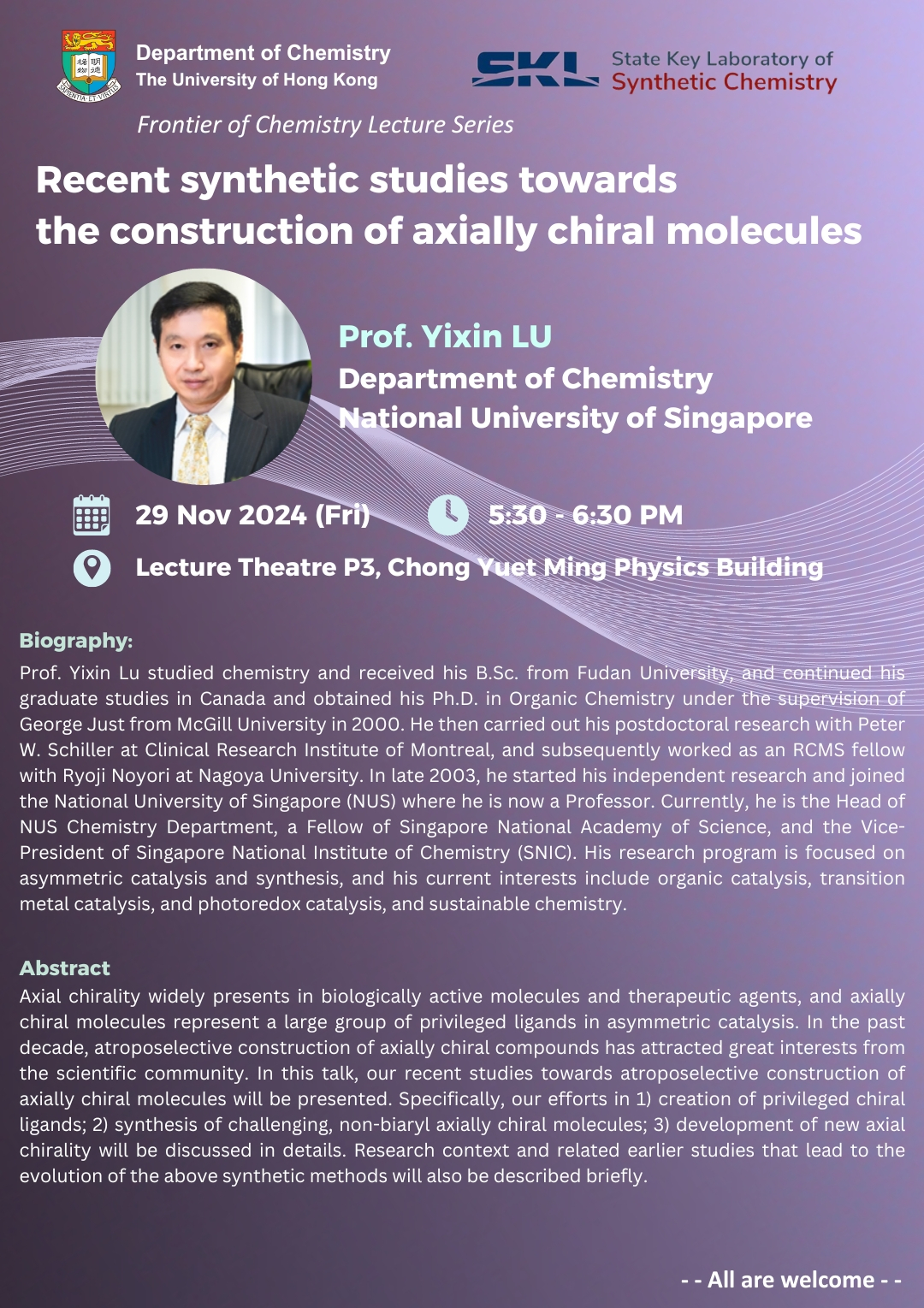| Date | 29 Nov 2024 |
| Time | 5:30 pm - 6:30 pm (HKT) |
| Venue | Lecture Theatre P3, Chong Yuet Ming Physics Building |
| Speaker | Prof. Yixin LU |
| Institution | Department of Chemistry, National University of Singapore |

Title:
Recent synthetic studies towards the construction of axially chiral molecules
Schedule:
Date: 29th November, 2024 (Friday)
Time: 5:30 - 6:30 pm (HKT)
Venue: Lecture Theatre P3, Chong Yuet Ming Physics Building
Speaker:
Prof. Yixin LU
Department of Chemistry
National University of Singapore
Biography:
Prof. Yixin Lu studied chemistry and received his B.Sc. from Fudan University, and continued his graduate studies in Canada and obtained his Ph.D. in Organic Chemistry under the supervision of George Just from McGill University in 2000. He then carried out his postdoctoral research with Peter W. Schiller at Clinical Research Institute of Montreal, and subsequently worked as an RCMS fellow with Ryoji Noyori at Nagoya University. In late 2003, he started his independent research and joined the National University of Singapore (NUS) where he is now a Professor. Currently, he is the Head of NUS Chemistry Department, a Fellow of Singapore National Academy of Science, and the Vice-President of Singapore National Institute of Chemistry (SNIC). His research program is focused on asymmetric catalysis and synthesis, and his current interests include organic catalysis, transition metal catalysis, and photoredox catalysis, and sustainable chemistry.
Abstract:
Axial chirality widely presents in biologically active molecules and therapeutic agents, and axially chiral molecules represent a large group of privileged ligands in asymmetric catalysis. In the past decade, atroposelective construction of axially chiral compounds has attracted great interests from the scientific community. In this talk, our recent studies towards atroposelective construction of axially chiral molecules will be presented. Specifically, our efforts in 1) creation of privileged chiral ligands; 2) synthesis of challenging, non-biaryl axially chiral molecules; 3) development of new axial chirality will be discussed in details. Research context and related earlier studies that lead to the evolution of the above synthetic methods will also be described briefly.
*Co-organizing with the State Key Laboratory of Synthetic Chemistry
- - ALL ARE WELCOME --
